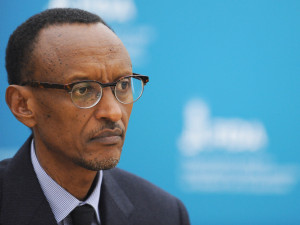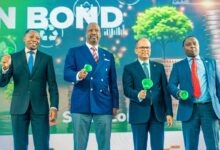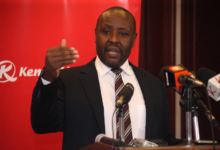

Rwanda’s @PaulKagame has become Africa’s most followed president with 842,260 followers ahead of Kenya’s Uhuru Kenyatta (@UKenyatta). Rwanda’s President @PaulKagame is also the most conversational world leader with 86% of his tweets being @replies to other Twitter users.
This is according to according Burson-Marsteller’s Twiplomacy study, an annual global survey of world leaders on Twitter. Twiplomacy aims to identify the extent to which world leaders use Twitter and how they connect on the social network.
Other key findings as of 24 March 2015 were that the five most followed world leaders were U.S. President Barack Obama (@BarackObama) (57 million followers of the U.S. president’s campaign account), Pope Francis (@Pontifex) with 20 million followers on his nine different language accounts, India’s Prime Minister @NarendraModi, Turkey’s President Recep Tayyip Erdoğan (@RT_Erdogan) and the @WhiteHouse. However, the most followed world leaders follow few other peers, and they are hardly conversational. @BarackObama and the @WhiteHouse only follow four other world leaders, namely Norway’s Erna Solberg, Russia’s Dmitry Medvedev, the UK government and Estonia’s Foreign Minister Keit Pentus.
While @BarackObama is the most followed world leader, he is also dwarfed in terms of retweets per tweet by Pope Francis who averages almost 10,000 retweets for each tweet sent on his Spanish account, against 1,210 for each tweet sent by @BarackObama.
European foreign ministers also use Twitter to establish mutual connections, creating a virtual diplomatic network. French Foreign Minister Laurent Fabius (@LaurentFabius) is the best connected foreign minister, mutually connected to 100 peers. Russia’s Foreign Ministry is in second position maintaining mutual Twitter relations with 93 other world leaders. The Foreign Ministry in Paris is in third place with 90 mutual connections. These mutual connections among foreign ministers allow for private conversations via direct messages on Twitter.
“This study illustrates that governments are becoming savvier and more professional in the use of social media,” said Jeremy Galbraith, CEO of Burson-Marsteller Europe, Middle East and Africa and Global Chief Strategy Officer. “It is interesting to see how foreign ministries have honed their social strategies and built substantial dedicated teams to manage their online channels. We believe corporations can learn a lot from governments and their leaders on Twitter.”
More than 4,100 embassies and ambassadors are now active on Twitter. In New York, Washington, London and Brussels, most diplomatic missions use Twitter to have a voice at the digital table. Canada, the EU, France, Israel, Mexico, the Netherlands, Poland, Russia, Spain, Sweden, Turkey, Ukraine, the UK and the U.S. have put most of their embassies and missions on Twitter. The UK Foreign Office in London also encourages personal engagement by its ambassadors, and it is virtually impossible to become a Foreign Office diplomat without using digital tools.
“It always amazes me how quickly governments adapt to the ever changing social media landscape,” said Matthias Lüfkens, Burson-Marsteller’s EMEA Digital Practice Leader and author of the report. “Some governments have become very professional at using Twitter’s six second Vine videos and others are already going live on Periscope, Twitter’s latest livestreaming application.”
Over the past four years, Twitter has become the social media channel of choice for world leaders to reach large audiences with key messages and soundbites.
Governments are putting more effort into their social media communication and are including more visuals and videos in their tweets. Some, such as the @Elysee Palace, are regularly posting six-second Vine videos to summarize state visits or to cheer their national team, as the German Foreign Ministry did during the World Cup. A handful of leaders, including the Elysée Palace and the Kremlin, are also early adopters of Twitter’s new livestreaming application, Periscope. Colombia’s President Juan Manuel Santos has recently gone live on Periscope to announce the resumption of air raids against the FARC rebels.
Released today, the study analyzed 669 government accounts in 166 countries and revealed that 86 percent of all 193 United Nations (UN) governments have a presence on Twitter. One hundred and seventy-two heads of state and government have personal Twitter accounts and only 27 countries, mainly in Africa and Asia-Pacific, do not have any Twitter presence.
“The Burson-Marsteller Twiplomacy Study has become an essential gauge of the power and reach of social media,” said Donald A. Baer, Worldwide Chair and CEO, Burson-Marsteller. “This fourth annual Burson-Marsteller Twiplomacy Study provides critically valuable insights about the communications practices and needs of leaders around the world.”
The study also revealed that all but one of the G20 governments have an official Twitter presence, and six of the G7 leaders have a personal Twitter account. However, few world leaders are tweeting themselves. Notable exceptions include Estonian President Toomas Henrik Ilves (@IlvesToomas), European Council President @DonaldTusk, Latvian Foreign Minister @EdgarsRinkevics and Norway’s Prime Minister @Erna_Solberg, who admitted to suffering from dyslexia and makes the occasional spelling mistake.
As of 24 March 2015, all world leaders combined had sent 2,653,876 tweets, posting on average four tweets each day. The Venezuelan presidency (@PresidencialVen) has sent close to 60,000 tweets, averaging more than 41 tweets each day. However, the study also showed that quite a few politicians use Twitter only during election campaigns. Indonesia’s President Joko Widodo (@Jokowi_do2) abandoned his 2.7 million Twitter followers once elected in August 2014, as did Chile’s President Michelle Bachelet @PrensaMichelle once elected on 11 March 2014.




